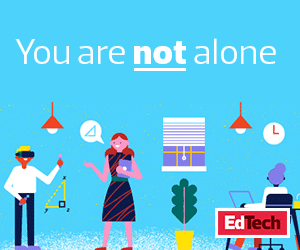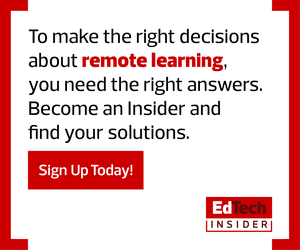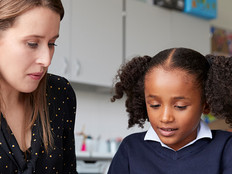Remote Learning Is Not the Same as In-Person Instruction
Classroom teachers and support professionals are especially burdened with the responsibility of sustaining academic growth and the well-being of their students in the new normal. With Wi-Fi hotspots and routers temporarily replacing brick-and-mortar walls, educators and students still need to connect, engage in exciting learning opportunities, strengthen and build skills, and explore and personalize learning with project-based activities. As committed educators, teachers and support professionals seek to continue using data to drive instruction, assess for mastery, differentiate based on learning abilities and styles, develop relationships, and care for the emotional and physical well-being of their students.
Understandably, educators are overwhelmed with this crisis-driven model of education, and many of them attempt to replicate the dynamic face-to-face classroom experience for their students. However, what students can do successfully with teachers in a classroom is not easily duplicated in a virtual one.
DISCOVER: Here's how to continue remote learning for students without internet.
Try New Approaches to Make Learning Dynamic
Educational technology and e-learning are not new resources for school districts. Since the rollout of Chromebooks, tablet computers and laptops for educational use, students and educators have grown more adept at 21st-century skills such as collaboration, creativity and communication. However, due to the pressure and sense of urgency placed upon dedicated teachers during remote learning, they may find it less intimidating to share long recorded lessons and lectures, create fillable worksheets and assign online multiple-choice types of assessments. These strategies, according to the SAMR (substitution, augmentation, modification and redefinition) model, are simply a substitution for face-to-face learning and will not transform education in any environment.
Using the International Society for Technology (ISTE) Standards for Students, educators can use remote learning to empower students to be knowledge constructors, computational thinkers and creative communicators. Using the educational approach of the flipped classroom and including tools such as screen-recording apps, virtual meeting rooms, collaborative documents and learning management systems can be both short-term and long-term paths to creating dynamic and interactive learning environments.
READ MORE: Find tips for moving classroom management online.
Use Proven Approaches to Online Instruction
As lifelong learners, educators are always challenging themselves to provide students with the most effective instructional tools and resources. While this is extraordinarily commendable in this time of educational triage, it is recommended that educators and students use tools already incorporated in their classroom.
It is easy to be enticed by free educational technology resources with quick solutions meant to mirror the traditional learning experience. However overwhelming the obstacles of e-learning, educators should stick with what they know and what already works well when possible.
Educators and administrators should look at introducing technology into instruction even in this time of forced e-learning through the lens of the Triple E Framework of engagement, enhancement, and extension of learning goals. “Effective technology use in learning is rooted in effective instructional strategies for learning,” University of Michigan professor Liz Kolb says on the Triple E Framework website.
Leveraging technology tools in an e-learning environment that help ensure students stay on task and reach their learning goals will result in students owning their learning. The approach will also encourage deeper dives into students’ areas of interest and provide real-world and global connections.
MORE ON EDTECH: Learn how to provide immersive learning experiences remotely.
Engage in Co-Teaching, Team Approaches to Support Educators
Educators and support professionals collaborate, share data and support students on an ongoing basis through department, grade-level and team meetings. These invaluable opportunities result in increased attendance, reduced numbers of discipline issues, improved academic performance and better identification of high-risk students.
The silos created with e-learning can have a long-term detrimental impact on students’ future success. To prevent this, educators can implement co-teaching models into their virtual classrooms. Using educational platforms such as Google Classroom and Microsoft Teams and learning management systems such as Schoology and Canvas, grade-level and content-level educators don’t have to go it alone. Using co-teaching approaches during remote learning — such as parallel, alternate, station and team teaching — ensures educators are supported. It also will provide a consistent learning experience for students.
Educators are feeling the pain of transitioning and adjusting to remote learning. They are well aware of the impact closed school buildings are having on curriculums, face-to-face student connections and the support of all learners. It is important to keep three things in mind: Take time to reflect on the experiences gained, the skills learned and the more robust relationships with colleagues, students and parents. Continue to address the educational and digital inequities among our students and families that have come to light during this unprecedented crisis. Most important, recognize that educators play an essential role in students’ lives, whether within the walls of a classroom or on screen in a Zoom room.












